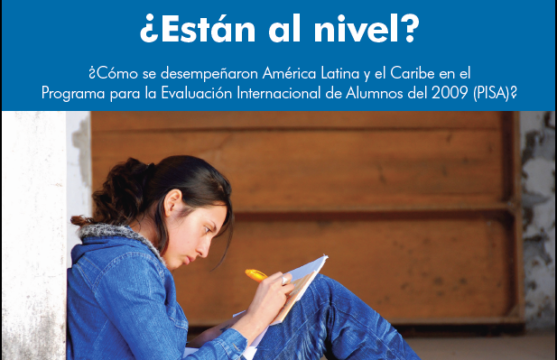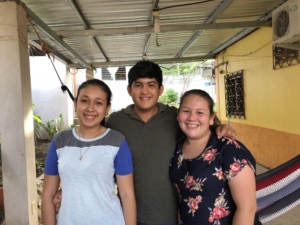
Measuring Up?
PREAL publication analyzes how Latin American and Caribbean countries performed on PISA tests.
This post is also available in: Spanish
In 2013, I moved to Honduras to teach middle school English at a community-run bilingual school outside San Pedro Sula. It is one of many such schools; a report by the Honduran government claims that the country has more bilingual schools than any other in Central America—over 800 in total, graduating more than 10,000 students annually. The current administration has worked assiduously to position Honduras as a potential home for companies seeking bilingual employees. Outsourcing services, such as call centers, and tourism are two of six key sectors highlighted in the country development program aimed at attracting foreign investment. Call centers in particular have boomed—since the first centers opened less than a decade ago, they have created over 15,000 jobs, and employers are still adding thousands of positions each year.
Even though English proficiency is required for many of these positions, and despite Latin America’s relative proximity to the United States, the country struggles to produce students with high-level English skills. On the Business English Index, which assesses English proficiency for the workplace, Honduras ranked lowest among all Latin American countries. While most people tested can read and communicate with simple phrases, the average test-taker is unable to communicate and understand information in a business setting.
 The students at San Jeronimo Bilingual School (SJBS)—where I taught—are in many ways the exception to this pattern. Not only do they speak, read and write English with a high level of fluency, but—thanks to an innovative scholarship program—many come from low-income and vulnerable communities. Although the school does not evaluate student proficiency using a standardized assessment, there are several observable education quality indicators. Students communicate with their teachers exclusively in English. They are comfortable enough in the language to use it in a variety of contexts. Now that most of my former students have graduated from high school,[1] they are entering the labor force, and by far the most popular position is at a call center. The fact that SJBS graduates are consistently able to land these jobs is compelling evidence that they have the English skills necessary to succeed in a competitive work environment.
The students at San Jeronimo Bilingual School (SJBS)—where I taught—are in many ways the exception to this pattern. Not only do they speak, read and write English with a high level of fluency, but—thanks to an innovative scholarship program—many come from low-income and vulnerable communities. Although the school does not evaluate student proficiency using a standardized assessment, there are several observable education quality indicators. Students communicate with their teachers exclusively in English. They are comfortable enough in the language to use it in a variety of contexts. Now that most of my former students have graduated from high school,[1] they are entering the labor force, and by far the most popular position is at a call center. The fact that SJBS graduates are consistently able to land these jobs is compelling evidence that they have the English skills necessary to succeed in a competitive work environment.
Even when students enter careers or education programs that don’t require English, their familiarity with the language can be an asset. For example, while entry-level positions in some industries may not require English, managerial positions often do, and young people seeking to advance in their careers will need these skills. Additionally, English language abilities can be a signal for other desirable skills that employers may look for, such as familiarity with diverse cultures. Multiple studies have shown that there are also extensive cognitive benefits to bilingualism, beyond the immediate advantages of being able to speak another language, such as improved executive function to solve problems, a heightened ability to monitor changes in their environment and increased resistance to degenerative diseases such as Alzheimer’s and dementia.
Why has SJBS been so successful at producing English-proficient graduates? Although we lack rigorous empirical data on variables determining students’ English language abilities, it is safe to say there are a number of key factors—most of which the students themselves identify as critical to their success:
Although there are many things about the SJBS model that work well, one of its major hindrances is that it is a difficult one to scale given the human resources and community buy-in necessary for its success. Recruiting, training and funding teachers from abroad is a serious endeavor, and not a realistic solution for the majority of Honduran schools. Additionally, SJBS (and the two other schools in its network) are run by local communities with a high degree of stakeholder involvement. This is not the case in most Honduran public schools. If Honduras is serious about expanding opportunities for students through English proficiency, it must rigorously pursue policy options to expand and strengthen its English education programs.
[1] This in itself is a significant accomplishment, since less than half of Hondurans complete secondary school (UIS, 2018).
PREAL publication analyzes how Latin American and Caribbean countries performed on PISA tests.
Event participants discuss Education Ministry and highlight difficulty of balancing political pressures with long-term goals.
Why Pakistan represents “the biggest education reform challenge” and 12 lessons that are applicable to reform efforts around the globe.

